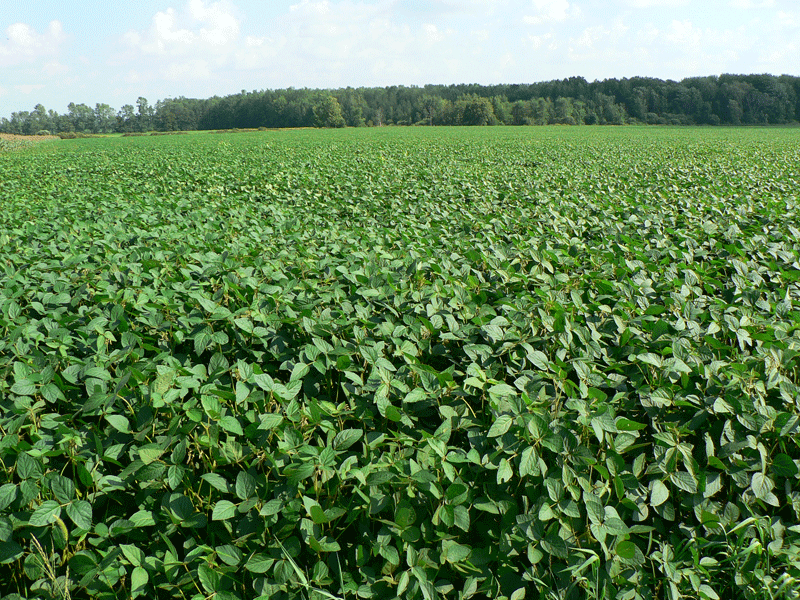Seeking approval
THE CHALLENGE WITH BIOTECH CROPS IN THE EU
WITHIN THE EUROPEAN Union (EU), fewer GM products are being authorized for import each year and it is taking longer for those products to get through the politically driven multi-level approval process.

“The delay is twice as long to have something approved in Europe compared to the United States; it takes an average of four years in the EU to approve GM products for import, while the US is aiming at 1.5 years. This difference in the pace of approvals for GM crops that have already been authorized elsewhere leads to costly trade disruptions,” says Nilsy Desaint, Public Affairs and Communications Manager for Green Biotechnology Europe, a unit of EuropaBio (the European Association for Bioindustries).
About 50 products are now authorized for import — but Desaint says there is still a problem with how quickly they get approved, and the backlog is growing.
The multi-level approval process involves both a scientific review and political approval. According to statistics provided by EuropaBio, GM food or feed products approved for import between 2011 and 2013 spent an average of 48 months going through the EU authorization process; of which, 19 months were spent on processing and voting-related procedures within the EU Commission after the European Food Safety Authority (EFSA) completed its review and gave the product a positive opinion. That’s compared to the time period of 2004-2011 when the average approval took 45 months, of which 16 months were spent at the political stage.
“As the EU highly depends on imports, especially for feed, the lack of predictability and legal certainty on GM approvals is a cause of increased concern for industry, traders, the animal feed industry, and livestock farmers alike,” says Desaint.
CHANGING REGULATIONS
International biotech companies who submit their traits for authorization have to respond to changing requirements as part of the regulatory scrutiny during this lengthy process.
“Changing regulatory requirements are kind of like moving goalposts. When you think you are ready to score – the goal starts to move left or right, or actually, it’s constantly moving,” notes Aneke Schwager, Manager of Public & Government Affairs with Bayer in Brussels. “Even if you have a file that is already pending, or has already been undergoing risk assessment for quite a while, new requirements that come into effect de facto get applied by the authority retroactively — and this is not how it is supposed to work.”
Schwager explains that the implementing regulation on genetically modified food and feed, which came into effect last year, converted the guidelines used by risk assessors at the EFSA into law. This takes away the assessor’s flexibility to apply the most sound scientific assessment per product, and to adapt to scientific progress. For example, rat feeding studies were made mandatory even though risk assessors stated publicly that, in most cases, it doesn’t make sense scientifically to do them because they do not give you any additional insight or information on the products’ safety.
“Another challenge we are starting to be confronted with is that the EU system cannot cope with the evolution of technology; it will take even longer to receive approvals as we go on,” says Desaint. “With stacked products you don’t have only one trait inserted in a specific crop; you have several traits that are combined to deliver a more complete solution to agronomic challenges. With the European regulations you first need to have the approval on the individual traits before seeking approval for the stacked product; whereas, in the US and a number of other countries, stacks are not regarded as new GMOs. Given the current backlog, it is difficult to see how the authorities will cope with that. The system lacks efficiency and often trumps science.”
Schwager builds on that concern by noting, “Imagine if a single trait is no longer supported from the regulatory perspective from a company that invented the individual trait in the first instance, then ultimately the higher stack and the sub-combinations containing this single trait would be rendered invalid. Here in Europe, once you have approval it is only valid for a period of ten years. This forces companies to consistently undergo renewal cycles for their GM products. Half way through the approval time period we are already preparing for renewal.”
LENGTHY PROCESS
During a market development program to the EU organized by Grain Farmers of Ontario and the Canadian Soybean Council at the end of last year, concerns over the lengthy approval process for new soybean biotechnology traits and the disruption this could cause to trade were discussed with several industry organizations and government officials.
Dicamba tolerant and high oleic soybean traits are examples of products currently approved in Canada but are still awaiting approval in the EU that could impact Canadian exports. “These need to be approved within a quick timeframe, as production is slated to begin in Canada as early as 2015,” says Crosby Devitt, Manager, Market Development and Research. “If there is a delay, it could affect the successful commercialization of these products.”
“One-third of our current soybean production is exported to the EU,” continues Devitt. “Europe imports the vast majority of the soybeans it uses for animal feed, and much of that is from a GM crop. So once the traits are approved they will move into that market.”
Currently, Canada is only exporting whole soybeans to the EU where they are then further processed; however, there may be opportunities to export soybean meal through the Comprehensive Economic and Trade Agreement. The success of those future opportunities will depend in large part on consumer acceptance.
EuropaBio has created several fact sheets to inform the public and a website, called ‘Growing Voices’, which is designed to highlight the growing number of voices calling for a renewed discussion on GMOs in Europe.
“With this very polarized debate you have pro-GM, anti-GM, and a big mass of people who know little about the technology and its benefits,” says Desaint. “So we are trying to reach out to them and provide an occasion to listen to experts and scientists, people who have experience with the technology, including farmers. There are farmers in Spain, Portugal, Romania, who are cultivating GM crops and who are ready to share their experience.”
Desaint notes that only one GM product is approved for cultivation in the EU, and another one was recently voted upon, but so far only one is actually grown.
Devitt has helped to share the Canadian experience of growing GM and non-GM crops alongside each other. During a recent meeting of the European Coexistence Bureau in Seville, Spain, he spoke about the segregation and traceability systems that have been implemented in Ontario in order to ensure crops have been handled properly and are not cross-contaminated by other varieties.
“By showing how our systems work, we hope to be a model upon which GM crops can be more widely accepted for cultivation. We don’t believe this would limit our export market potential, but rather it would increase our opportunities because if a trait is allowed to be grown in the EU, it’s one less barrier to allowing it for import,” says Devitt.
FUTURE EXPECTATIONS
Realistically, though, further cultivation of GM crops in Europe is still a long way off. That’s why, “Our focus is to facilitate trade and seek import approvals because from a business perspective there really is no incentive at this point to seek approvals for cultivation in Europe,” says Schwager.
Instead, industry groups from the value chain are hoping to build upon the technical solution for feed which provides analytical certainty for unintentional trace amounts (limit of detection 0.1 percent) of GM material that isn’t approved in the EU, as long as that trait is currently within the EU approval process. The goal would be to extend this regulation to food in order to reduce the number of shipments that are rejected due to the EU’s zero tolerance policy, and to limit the impact of false positives.
EuropaBio will continue its efforts to provide facts on biotechnology to consumers and lawmakers. “We will continue to explain that in order to remain competitive, it doesn’t make sense to restrict ourselves but we should rather use all of the tools available, including GM,” says Desaint. “Through our Growing Voices initiative, we hope to engage in a non-confrontational way and address people’s concerns. There are many great stories to talk about; many people are not aware that a Belgian professor, Pr. Van Mantagu, was involved in the discovery of the GM technique. When facts are clear, there is much more room for constructive exchanges. That is what we are aiming at.” •
Interested in learning more?
www.europabio.org
www.growingvoices.eu
www.efsa.europa.eu

















